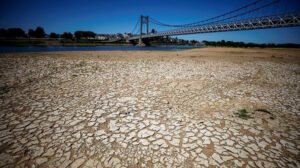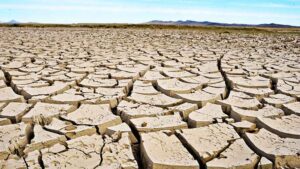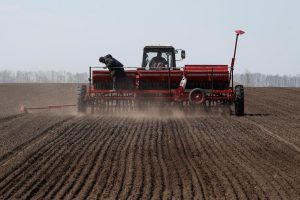
Due to the drought observed in Ukraine, autumn winter crops have already been partially lost, at the same time, the prolonged lack of precipitation intensifies the pace of the harvesting campaign and contributes to high quality corn grain, according to the analytical cooperative “Pusk”, established within the framework of the All-Ukrainian Agrarian Rada (VAR).
“The forecast model does not show precipitation in Ukraine in the near future. Therefore, the moisture content of corn grain remains low, averaging 17-20%, while in the past season it was 30-35%. This will help reduce the cost of corn grain, as one drying cycle is enough for the harvested crop,” analysts said.
They noted that in early October, agrarians will intensify the collection of corn, because they will complete the harvesting of sunflower and soybeans.
At the same time, it is noted that the shelling of ports in Odessa and Danube region hinders the export of corn. At the same time, this product is in demand from China exclusively on CIF basis with delivery in October-December at a conditional price of $250/ton.
“On all bases weekly price tags for Ukrainian corn lose 3-5$/ton. The supply of its grain is high, but logistical problems are and will continue to be a factor in the fall of prices, especially in the deployment of the harvesting campaign”, – explained in the CAP and added that in a week we can expect the following level of prices for 1 ton of corn: SRT river ports – 140-150$, DAP border – 145-155$.

French Minister of Environmental Transformation Christophe Béchou said on Franceinfo that a drought prevention committee was convened Thursday, to be followed on Monday by a meeting of all the prefects of the national territory.
“This winter is the driest since 1959,” the minister recalled, answering questions from the channel on Wednesday.
He said that France was on “drought alert.” The country has not had any significant rain for 31 days, although precipitation is expected in some places starting Feb. 22.
A meeting with prefects is expected to “look at territory by territory, what things are like,” Beshu noted.
He confirmed that strict restrictive measures on water use could be announced Monday, to begin in March, “to avoid catastrophic situations this summer.”
In view of this prospect, the minister urged that efforts to conserve water be made “already now.” To date, restrictions are already in force in parts of the eight departments of the country. In four departments, emergency water control is in place.
Climatologists are very concerned about the insufficient level of underground water reserves. The French aquifers are “two months late, in terms of filling,” according to Béchu. “It’s fixable, but we need a rainy March, we have two months ahead of us,” the minister explained.
He said that an “extensive water plan” of about fifty measures will be presented in the coming days. The French, in particular, will be encouraged to moderate the use of drinking water for technical and agricultural purposes. The minister also advocated a greater use of treated wastewater in agriculture.
In the summer of 2022, many regions in France experienced a historic drought.

A number of EU regions will experience an unprecedented drought for another three months, the Associated Press reported on Wednesday, citing an EU report.
Drought and high air temperatures are expected in the western Mediterranean until November 2022, the report says.
It is noted that in particular this will affect Portugal and Spain.
Nearly half of the EU countries currently have a drought warning in place. In addition, the deterioration of the situation is observed in Belgium, France, Germany, Hungary, Ireland, Luxembourg and others.
Earlier it was reported that, according to the Joint Research Center of the European Commission, the current drought seems to be perhaps the worst in the last 500 years. Final data at the end of the season may confirm this preliminary estimate.
The countries of Europe, which this summer are suffering from wildfires associated with abnormal heat and drought, broke a sad record in 2022: 662.8 thousand hectares were devastated by fire.
Among the states most affected by fires this year are Spain (246 thousand hectares of burned forests), Romania (150 thousand hectares), Portugal (75 thousand hectares) and France (61 thousand hectares).

Approximately 60% of the EU and Britain this year are experiencing the effects of drought, which is exacerbated by abnormal heat, the Axios portal reported on Wednesday, citing the European Copernicus Atmospheric Monitoring Service.
“The drought, coupled with high temperatures, is leading to an increase in the risk of fires due to lack of rain and to the appearance of dead wood,” the service said in a statement.
At the same time, EU countries such as France, Spain, Italy and the Netherlands are facing water shortages. Such conditions have a negative impact on agriculture, energy and river navigation.
The UK’s main weather service said the south and east of England experienced their hottest July on record. Meteorologists expect the dry weather to last until October.
Employees of the Atmospheric Monitoring Service earlier, after analyzing data for the end of July, found that by the middle of the month up to 45% of the EU was in the drought zone, and 15% had a serious water shortage.
Also in July, service specialists predicted that dry weather conditions in the region would continue in August and September.

The losses of winter crops due to drought in Ukraine in the entire country are estimated at 234,000 ha, which is 2.6% of all areas with winter crops, the Ministry for Economic Development, Trade and Agriculture has told Interfax-Ukraine. According to the ministry, the most affected by the drought are winter rape crops – 103,000 ha, wheat – 74,000 ha, barley – 53,000 ha, and peas – 1,300 0 ha.
Potential crop losses in 2020/2021 agri-year for winter wheat are 216,650 tonnes, winter rape – 211,890 tonnes, winter barley – 150,820 tonnes, sugar beets – 50,030 tonnes, peas – 3,050 tonnes, winter rye – 539 tonnes.
At the same time, the Economy Ministry estimates the possible loss of revenue for winter rape at UAH 2.14 billion (19% of the possible income from crops), winter wheat – UAH 0.99 billion (3%), winter barley – UAH 0.63 billion (12%), and sugar beets – UAH 0.03 billion (2%).
“In March-April this year, there was rainfall deficit throughout Ukraine. As a result, spring air drought developed and deepened, which combined with soil drought in many areas of the southern regions,” the ministry said.